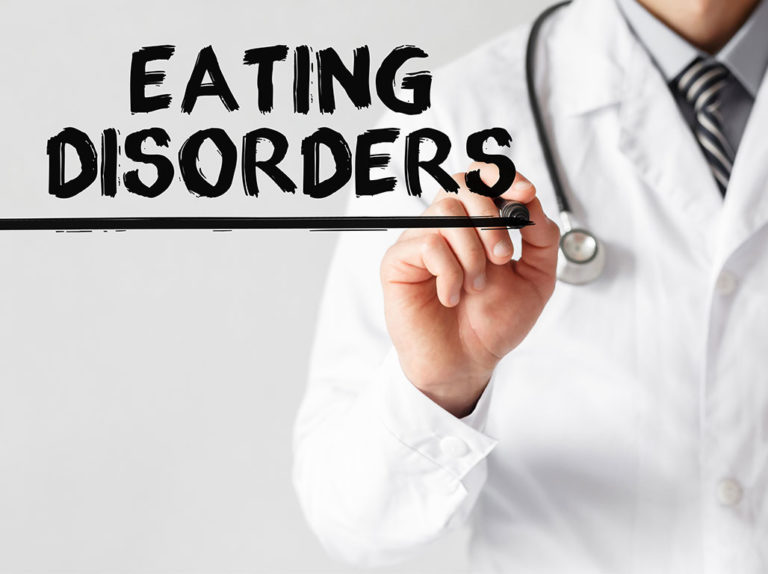Often called Food Disorders, eating too much or not enough as in Compulsive Overeating, Bulimia, Anorexia, and Binge Eating are often difficult to detect and to understand. Eating is part of everyday life and necessary to provide the nourishment for good health. The rituals of eating are essential to social and family life. In addiction, many cultures encourage consumption of food as a way of giving love and hospitality. How does one tell the difference between a fully addicted overeater, and someone whose culture is eating, or just does not know when enough is enough?
Food Disorders Are More Than Just Dieting Or Eating A Lot
The question also applies to someone restricting food intake through dieting to be slimmer and someone who can’t stop restricting food to the point of not sustaining a healthy body weight. According to the DSM-V (Diagnostic and Statistical Manual of Mental Disorders) there are many psychological and social reasons for these conditions. Socio-cultural issues including poor body image, junk food culture diet crazes, and unrealistic media presentation of body image are among them. Past trauma and emotional pain can also trigger food disorders. Psychologically, many Compulsive Over eaters describe self-regulation problems and eating for emotional comfort. Also, many overeaters and under eaters are in general susceptible to addiction.
When Did Food Disorders Start
Food disorders of this nature were rare until 1973, when Hilde Bruch published a book with a number of case studies, called Eating Disorders: Obesity, Anorexia Nervosa, And The Person Within. As the disorder reached public awareness in the 1970s, cases increased, spreading beyond the upper class.
Bulimia (bingeing and then purging via exercise, vomiting, or laxatives) is first reliably described among some of the wealthy in the Middle Ages, who would vomit during meals so they could consume more. Apparently this behavior did not happen in ancient Rome despite a common conception otherwise. The first clinical paper on bulimia was published in 1979—Bulimia nervosa, an ominous variant of anorexia nervosa. The cases of anorexia and bulimia escalated in the 1970s and 1980s, and though some will say they peaked in that time, the national survey data suggests that bulimia, especially, continues to escalate. While most scholars will point to cultural pressures for thinness, increasing depression and obsessive compulsive behavior, and increased dieting behaviors as precipitants for eating disorders, it is impossible to ignore the fact that the 1970s and 80s is when the rates of obesity in the United States began to increase at an unprecedented rate, and low fat eating began its popular progression through the mainstream. There is a third eating disorder, binge eating disorder, where periodic food binges are not compensated by restricting or purging behavior. While many obese people eat normally, binge eaters will consume up to tens of thousands of calories in a singe day, entire bags of candy, or dinner from five or six fast food restaurants, one after the other. Again this disorder has been described for centuries, but seems to have escalated only recently. Binge eaters make up about 1/3 of the people who seek medical treatment for obesity.
Effects on the Brain
Like many pleasurable behaviors—including sex and drug use—eating can trigger the release of dopamine, a feel-good neurotransmitter in the brain. This internal chemical reward, in turn, increases the likelihood that the associated action will eventually become habitual through positive reinforcement conditioning. There is not enough known on food addictions to be clear whether food itself (fat and sugar to be specific) aid in the addictive process for those who lose control. But evidence is growing that a high consumption of sugar and fat contribute to the cycle of overeating and binge-eating and compulsive eating.
Short Term Effects
To start an addictive cycle, dopamine must be felt, and for that the brain must have ample dopamine receptors. In many substance abusers a low level of dopamine receptors, either from the outset or caused by the behavior, means they increasingly have to seek more dopamine-inducing substances to reach a level of neuro chemical reward they can enjoy. Eating more and more to get the same rewards followed by shame and feelings of worthlessness occur.
Long Term Effects
A long list of health issues that derive from over-eating, starving or purging. Damage to organs, heart disease, diabetes, obesity, digestion and other problems
- Insomnia
- Stress
- Social withdrawal, isolating, stealing food, hoarding food, lying about food, hiding food
- Psychological distress
- Low self esteem
- Feelings of worthlessness and shame
Withdrawal
- Depressed mood
- Shame
- Guilt
Compulsive Over Eating:
Characterized by eating in a period of time an amount of food that is considerably larger than most people would eat in a similar period of time under similar circumstances. A sense of lack of control over eating during the episode and a feeling that they cannot stop eating or control what or how much they are eating. Extreme Compulsive Overeating can result in Bulimia Nervosa.
Bulimia Nervosa
Characterized by recurring episodes of binge eating as defined above. Recurrent inappropriate compensatory behavior to prevent weight gain that includes
Subtype Purge – misuse of laxatives, diuretics, enemas or other medicines. Also self- induced vomiting.
Subtype Non-Purge – excessive exercise, fasting, starvation. Negative perception of weight, and/or body shape.
Binge Eating Disorder
Recurrent episodes of binge-eating as described above. Distress centered on binge eating 2 days a week for at least two month of binge eating episodes. In general the inappropriate compensatory behaviors listed above do not occur with simple binge eating disorder DSM
Criteria for Dependence Include The Following
- Tolerance: Characterized by more bingeing or eating or starving for feeling of satiety. This means there is a diminished effect over time that creates a demand for more.
- Excessive intake/restricting: Episodes are described as extreme or excessive.
- Withdrawal: Characteristic symptoms occur (e.g., anxiety, depression) when behavior is slowed or stopped so it must be resumed or increased to relieve or avoid symptoms.
- Intention Effect: eating or purging is often increased, and a longer time is spent at it with greater consequence than were intended.
- Loss of Control: A persistent desire or unsuccessful effort to cut down or control behavior.
- Time: more and more time is spent
- Reduction in Other Activities: social, occupational, or recreational activities are given up or reduced
- Continuance: bingeing, purging, starving is continued despite negative health and relationship consequences.
Description from Diagnositc Systems Manual of Mental Disorder and Emily Deans MD Psychology Today
Save
Save
Save





















